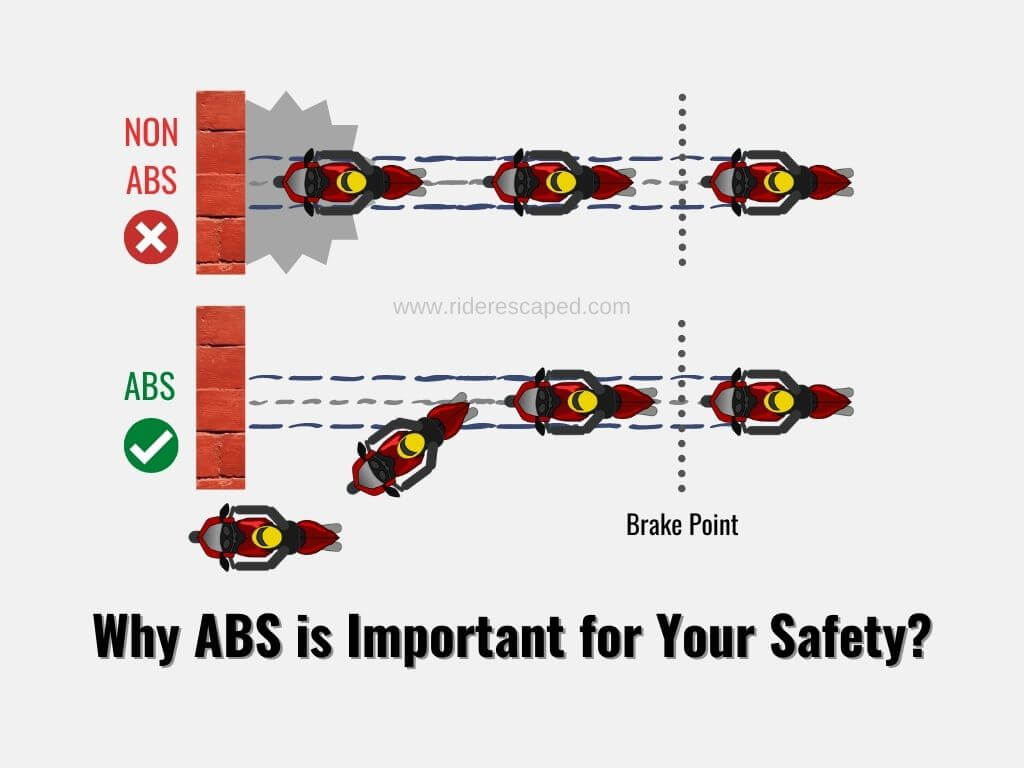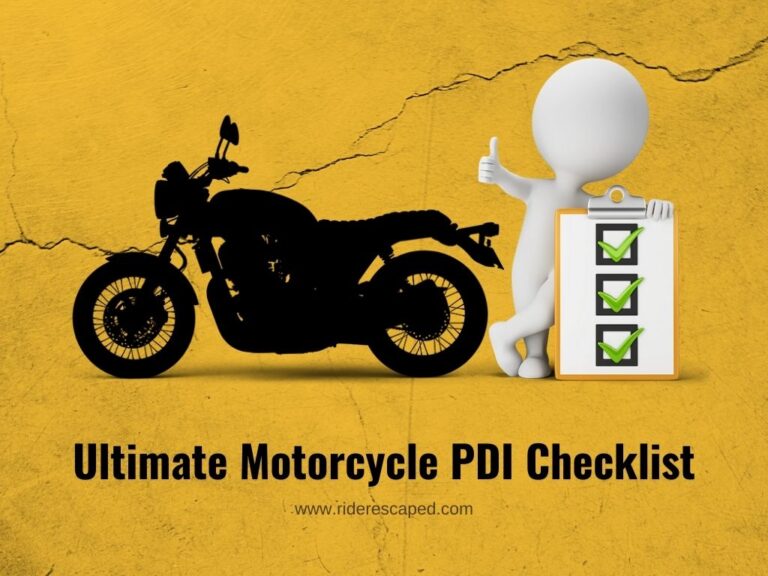Why Motorcycle ABS is Important for Your Safety?

The most basic safety feature a motorcycle must have is ABS (Anti-lock Braking System), which prevents wheels from locking in panic or hard braking situations. Each year, hundreds of riders die on the road just because they lack safety features like a helmet, riding gear, or proper control of their motorcycle, although there are many other factors; still, we simply cannot neglect our faults.
Today, we will discuss what is Anti-lock Braking System (ABS) is, how it works in motorcycles, and its importance in your safety. Skip risking your life!
How ABS works?
The working mechanism of an ABS is easily understandable by its name; whenever the rider applies the brake, it prevents the wheel from locking, but the question is, how?
An ABS electronic controller monitors the wheel rotation (rpm) and how much brake pressure (through brake fluid) is applied continuously so that it can automatically reduce brake pressure when it is about to lock the wheel, then immediately reapply again and continue to do so until the wheels stop.
This happens so instantaneously that, from the rider’s perspective, he noticed nothing extra was happening behind the scenes, rather than simply engaging the brake, and the motorcycle stopped.
You can watch a small video clip explaining how ABS works and its benefits from the class leader, Bosch.
Note: Most of the motorcycle ABS systems work at speeds of 30-40 Kmph or above.
Why ABS is a must-have Safety Feature?
For a very experienced rider who probably learned motorcycle riding in drum brakes, they may feel ABS is overrated, but trust me, it is not, and here is why? Controlling a motorcycle during hard braking is always a difficult task because
- Handling drastically reduces; otherwise rider may lose control and skid.
- Due to wheel-locking, a motorcycle may become unstable in unpredictable patches like mud, sand, ice, rocky & slippery terrains.
- Immediate stop for any reason from a good speed (more than 60 Kmph) could create more pressure on your legs, hands, neck, or even spine.
Now, I am 5.5 ft and own a Royal Enfield Thunderbird 350 (2015) without ABS. Obviously, on many occasions, like in Ladakh, Nainital, and Sikkim, I felt out of control due to panic braking. To overcome this, I had to engage the brakes or pump the brakes, although this worked well, still having an extra set of safety features that will get your back is quite justified.
Lastly, most of today’s newbies lack patience & will to control the motorcycle power despite the fact, current motorcycles are getting more power and torque figures day by day, even applicable for smaller displacement (cc) motorcycles. That is why ABS became a must-have safety feature.
Advantage
- ABS ensures great handling & maneuverability during hard braking, and even braking distance becomes shorter.
- Boosts confidence to ride and control a motorcycle better.
- ABS might enhance fuel economy due to controlled braking.
Disadvantage
- As ABS needs extra components like sensors, controllers, etc., the cost of a motorcycle increases.
- Many riders become reckless cause they think nothing wrong could happen to them.
- The same version of the ABS-equipped motorcycle weighs more than its non-ABS version.
- Replacing a faulty ABS may cost you more, but remember, life is more important than money.
Single-channel and Dual-channel ABS
ABS can be either a single-channel or dual-channel system. To simplify things, if a motorcycle has disc brakes in both wheels, it might have dual-channel; otherwise single-channel is only applicable for the front disc brake.
Generally, front-wheel locking is considered to be more dangerous than rear-wheel locking as we steer through it. So, a single channel is the minimum you must have. But if a motorcycle has punchy brakes in its rear wheel too, then dual-channel ABS is always recommended.
Installing ABS on a non-ABS motorcycle?
The only prerequisite to have an ABS system is a Disc brake because it measures the brake oil pressure to work. Although aftermarket so-called mechanical ABS is available, those are of no use, literally NO USE. Hence, OEM-fitted ABS is the only way; also, please never try to convert your non-ABS motorcycle to an ABS system. They often lack integrity and fail; the last thing you may want is to risk your life.
Latest ABS-related rules in India
Ministry of Road Transport and Highways had issued a mandatory rule stating that all two-wheelers having more than or equal of 125cc or below must have ABS (Anti-Brake Locking System) and CBS (Combi Braking System), respectively, in effect from April 2019.
Conclusion
ABS is a lifesaver, especially for two-wheeler, but it can also pamper your riding habits, although it is quite dependable, still you need to be more cautious with your braking patterns, in case it fails middle of nowhere, you might not want to meet with an accident.
Finally, we would always recommend purchasing a motorcycle with dual-channel ABS, and if it comes with ABS on/off functionality, do practice occasionally in ABS off mode so you don’t do wrong in case of ABS failure or riding a motorcycle without ABS.
Follow Us
Although we are in the process of queuing up the next post shortly. Till then, subscribe to the Rider Escaped Newsletter and connect with us on Social platforms to get future updates quicker.
Don’t forget to check out our complete Ladakh Ride Blog series.
Certainly, if you loved this post, share this with your buddies. Also, if I missed out on anything, do let me know in the comments section. I will include it in the post.
Sharing is Caring
Thanks! Have a great day ahead. Always be safe on the road.


You have posted such an informative guide about ABS system! Many riders are unaware which is important to know when to apply the ABS at certain time of the day. An ABS should be a must-have feature on all bikes.